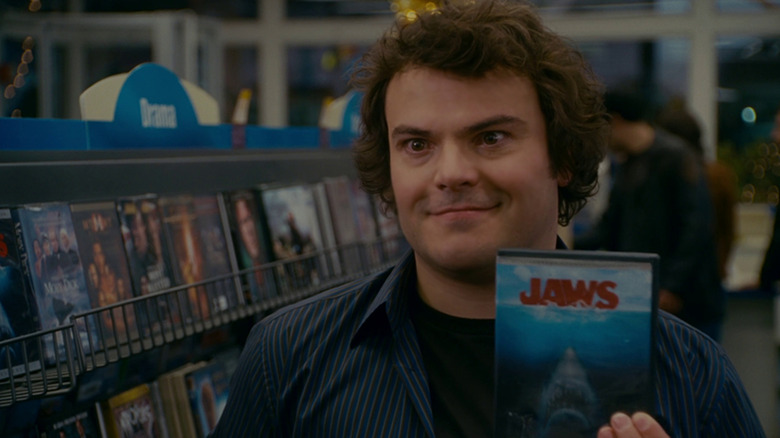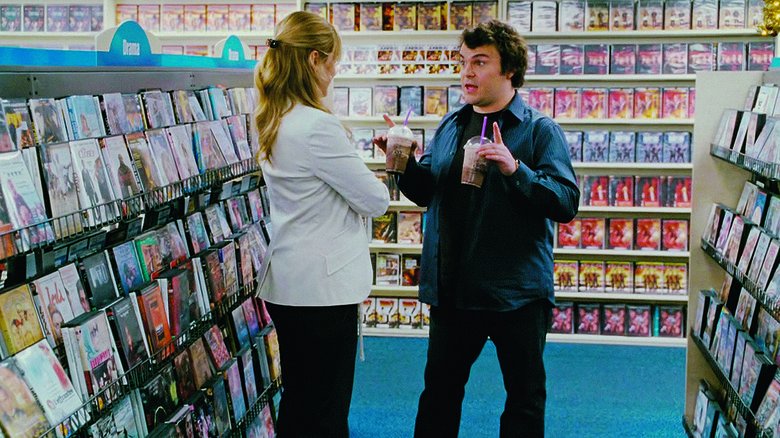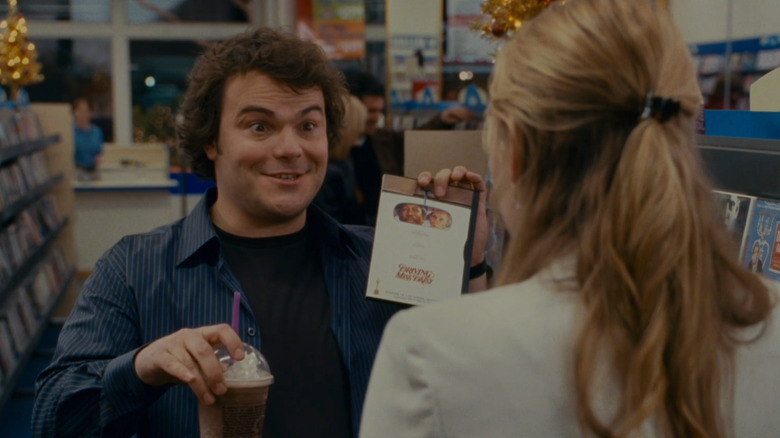What Does DVD Stand For?
VHS was introduced into the world in the 1970s, but took off in the 1980s thanks to the manufacturer, JVC, sharing the tech it developed with multiple other manufacturers. Sony, who owned the VHS rival technology Betamax, didn't license out their tech as openly, allowing VHS to proliferate much more quickly. It also helped that VHS was cheaper for the consumer, and Betamax, while often said to be better than VHS, floundered.
VHS revolutionized both film and television, creating a booming market for film-hungry consumers. Classic films were now widely available for the first time, straight-to-video movies became a thing, and people could tape their favorite shows straight from the TV. Appointment viewing became a thing of the past. Ask any Gen-Xer, and they will happily tell you epic tales of VHS collections, the discovery of classics (or schlock), the fun of taping event TV, and the newfound access to porn. Some films are still only available on VHS.
Starting in 1996, though, VHS's rulership was supplanted rather quickly by the introduction of DVDs. DVDs offered superior picture and sound, taking full advantage of CRT TVs, and some of the then-new flat-screens on the market. They were smaller as well, taking up less space on a shelf, and many DVDs included ancillary materials like making-of documentaries and interviews, unique to the format. The age of optional audio commentary tracks began, and subtitles could now be switched on and off with ease. There was no reason not to upgrade.
DVD stands for Digital Versatile Disc, or Digital Video Disc. Toshiba, Sony, and Philips, some of the tech manufacturers, used the latter at first but switched to the more universal former when computer and video game manufacturers noted that they used DVDs for functions other than video.
DVDs were lord of the universe
Because DVDs could be mailed, video rental by post became common, and Netflix began as a business, so named because you could rent flicks on the 'net. The tech became so ubiquitous that "DVD" became synonymous with "movie." There were scant disadvantages to the format when compared to the VHS cassettes they replaced. For one, they were, like the CDs they were extrapolated from, somewhat fragile, and a rented DVD often came with nicks and scratches that rendered them unplayable. Anyone who worked at a DVD rental store could tell you about how Sony's PlayStation 2s — which were DVD-capable — tended to leave radial scratches on discs, ruining them forever.
Also, with a VHS cassette, one could watch a tape partway through, eject it from the machine, re-insert it at a later time, and pick up exactly where you left off. DVDs needed to be started over every time. Well, depending on the players. Some of the better machines did have a "resume from last" feature.
Putting videos on a CD-sized disc was first developed in the late 1980s, and some early-'90s media nerds may even recall VCDs (video compact discs), one of the first formats to encode digital video files. DVDs are actually an admixture of two video disc formats that were being developed simultaneously. Perhaps recalling the war between VHS and Betamax a decade earlier, computer companies strong-armed video disc manufacturers into agreeing on one specific technology, thereby avoiding a format war.
Philips and Sony were working in the MMCD (multimedia CD) while Toshiba, JVC, and multiple others backed SD discs (for Super-Density). In May of 1995, Apple, IBM, and others declared they would boycott all video disc formats until one dominant tech could be decided upon. After a lot of insider nickering and technical finagling, the DVD as we know it was born. The technology was being mass-produced by that November.
The rise and fall of DVDs
The sudden popularity of DVDs shook the world. The picture quality was noticeably superior to VHS, and the thin cases made them imminently collectible. Classic films, if the studios that owned them so felt, were carefully remastered, and released with a brand-new polish that made them look better than they ever had. Tiffany DVD companies began to crop up, specializing in certain kinds of films; the age of the Criterion Collection began. DVD Box Sets became a thing.
DVDs also altered the way people consume TV. A 24-episode TV season, if captured in a high-quality SP format, would require 12 VHS cassettes. VHS cassettes were slightly over an inch thick, and storing that many cassettes for a single season of TV was ungainly. With DVDs, a whole season of TV could be fit in a box that was only about an inch-and-a-half thick. The reduced size made for easier access, an uptick in collectability, and people could now binge-watch entire shows. "24" owes its popularity to DVDs. Eventually, the makers of TV became savvy to the binge-watching habits of consumers and began to write TV to match. Season-long story arcs became de rigueur, as opposed to syndication-friendly "drama-of-the-week" models. DVDs altered the medium.
Eventually, of course, DVDs came to be supplanted as well. A format war between Blu-rays and HD DVDs raged very briefly in the mid-2000s, with Blu-rays handily coming out on top. Blu-rays were better suited to high-definition digital TVs that were coming into vogue, and DVDs suddenly seemed passé, despite the lower cost. By the 2010s, streaming started to catch on, and the casual buying and storing of physical discs fell out of favor.
But, golly, for about a decade, we were up to our necks in DVDs.


